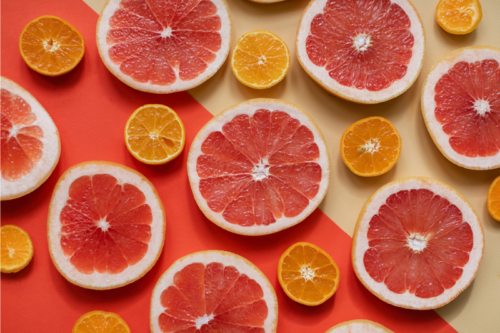
You may have heard of the buzzword antioxidant, but did you ever stop and question what it meant? Antioxidants prevent or delay certain types of cell damage. Flavonoids and Carotenoids are two types of antioxidants that have anti-inflammatory properties for improved neural and general health. They increase cerebral blood flow and artery protection and reduce cell damage.
Flavonoids can modulate key cellular enzyme function leading to beneficial health effects and increased cognitive function. These substances are abundantly found in foods and beverages of plant origin, such as fruits, vegetables, tea, and cocoa. In the dining commons, sources of dietary flavonoids can be found in the green tea at the Coffee Station, the red quinoa in the rotating Mexican Quinoa, apples, citrus fruits, mixed berries, and legumes like black beans, peas, and lentils.
Carotenoids are yellow, orange, and red pigments synthesized by plants. The most common carotenoids are beta-carotene, lycopene, lutein, and zeaxanthin. Food sources of these substances include brightly colored fruits and vegetables like spinach, kale, corn, orange bell peppers, tomatoes, watermelon, pink grapefruit, cantaloupe, broccoli, and carrots. Egg yolks are also an excellent source of bioavailable [see below] lutein and zeaxanthin.
Through observational studies [see below], dietary carotenoids have been found to provide health benefits in decreasing the risk of disease, particularly certain cancers and eye diseases. Lutein and zeaxanthin have been found to protect against eye disease because they absorb damaging blue light that enters the eye.
Carotenoid-rich foods can be found in the dining commons daily. Look for pumpkin, grapefruit, carrots, bell peppers, leafy green, eggs, broccoli, tomato, and tomato products. Some recipes to seek out include the Vegetarian Pumpkin Chili, Sautéed Green Beans with Red Bell Peppers, Sweet Potatoes, and Carrots.
Tip: Carotenoids are best absorbed with heart healthy fat in a meal. Cooking carotenoid-containing vegetables in oil or pairing them with nuts or seeds in meals generally increase the bioavailability of the carotenoids in the vegetables.
Next week we will unpack the role of leafy greens in a balanced diet.
What is bioavailability?
Bioavailability is the ability of a substance to be absorbed and used by the body. Foods with nutrients that can be easily absorbed and converted in the body are considered highly bioavailable sources.
Observational Studies
Observational studies do not include interventions or treatments. These types of studies can include methodological and statistical biases that can make the results unreliable. Their findings are less replicable than those drawn from controlled research. This is important to keep in mind when evaluating scientific research.
References
Hammer, G. P., du Prel, J. B., & Blettner, M. (2009). Avoiding bias in observational studies: part 8 in a series of articles on evaluation of scientific publications. Deutsches Arzteblatt international, 106(41), 664–668. https://doi.org/10.3238/arztebl.2009.0664
Johnson EJ. The role of carotenoids in human health. Nutr Clin Care. 2002;5(2):56-65. doi:10.1046/j.1523-5408.2002.00004.x
Panche AN, Diwan AD, Chandra SR. Flavonoids: an overview. J Nutr Sci. 2016;5:e47. Published 2016 Dec 29. doi:10.1017/jns.2016.41
Rein, M. J., Renouf, M., Cruz-Hernandez, C., Actis-Goretta, L., Thakkar, S. K., & da Silva Pinto, M. (2013). Bioavailability of bioactive food compounds: a challenging journey to bioefficacy. British journal of clinical pharmacology, 75(3), 588–602. https://doi.org/10.1111/j.1365-2125.2012.04425.
U.S. Department of Health and Human Services. (2013). Antioxidants: In depth. National Center for Complementary and Integrative Health. Retrieved January 20, 2022, from https://www.nccih.nih.gov/health/antioxidants-in-depth

